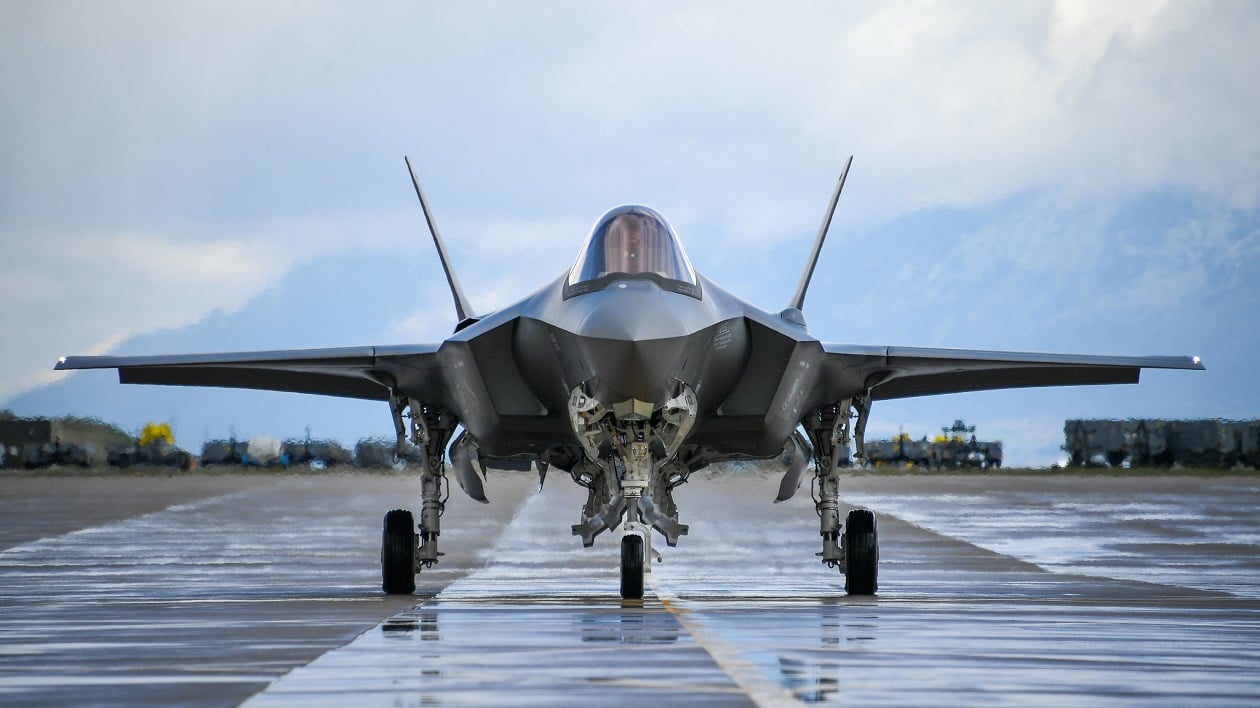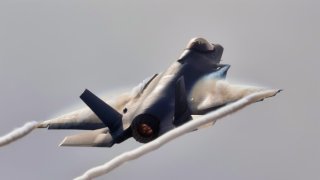The Navy's F-35C Stealth Fighter Something No Nation Can Match
The Lockheed Martin F-35C variant of the F-35 Lightning II, designed specifically for U.S. Navy carrier operations, distinguishes itself as a pivotal element of modern naval aviation.
Summary: The F-35C variant of the Lockheed Martin F-35 Lightning II, designed specifically for U.S. Navy carrier operations, distinguishes itself as a pivotal element of modern naval aviation. Part of the Joint Strike Fighter program, which began in the early 1990s and expanded to include several nations, the F-35C has been tailored to meet the rigorous demands of carrier-based activity.

-It features a wider wingspan for improved low-speed control, foldable wingtips for space efficiency on carriers, robust landing gear, and a tail hook for deck landings.
-Additionally, its extended range and considerable fuel capacity make it ideal for over-ocean operations. The U.S. Navy's commitment to integrating more F-35Cs into their forces is underscored by a recent $32 million contract with Lockheed Martin for additional aircraft, highlighting the F-35C's ongoing importance in maintaining naval air superiority.
Exploring the Unique Capabilities of the F-35C in U.S. Navy Service
The fifth-generation Lockheed Martin F-35 Lightning II is widely viewed as the most powerful fighter aircraft in the world, and it is in high demand. About 900 Lightning II airframes have been exported to date – a very impressive number for such a young platform.
The F-35C variant, designed for use by the U.S. Navy, is specifically built for carrier operations.
An Overview of the Joint Strike Fighter
The U.S. military’s “renaissance fighter” was born from the Joint Strike Fighter program. In the early 1990s, the Joint Advanced Strike Technology program was first established as a replacement for the Air Force’s Multi-Role Fighter and the Navy’s Advanced Fighter-Attack programs. Within a decade, the JSF had expanded to include a cohort of nine nations, including Canada, the United Kingdom, Denmark, Turkey, and Australia.
Three F-35 variants addressed the specific needs of the Air Force, the Marine Corps, and the Navy – the F-35A, F-35B, and F-35C respectively. All variants are powered by the Pratt & Whitney F135 engine to a top speed of Mach 1.6. While the F-35 is rightfully synonymous with stealth, the platform is truly much more than that. Once air dominance is established, the fighter can transition into what is known as “beast mode,” where the jet is able to carry up to 22,000 pounds of internal and external weapons.

What Makes the F-35C Stand Out?
As the carrier variant of the Joint Strike Fighter, the F-35C is purpose-built for operations aboard the U.S. Navy’s fleet of Nimitz- and Ford-class supercarriers. In order to maintain lower speeds during take off and landing, and to land on such short runways, this variant’s wingspan is the widest of the three. The Charlie’s wingtips are also able to fold in as a space-saving measure when deployed on the ship, an essential asset since space aboard these supercarriers is limited. Additionally, the F-35C features heavy-duty landing gear and a tail hook.
Since the Navy’s F-35 variant is tasked with flying over large tracts of ocean and sea, it is also capable of carrying roughly 20,000 pounds of internal fuel. Its range is greater than 1,200 nautical miles.
Considering the F-35C’s capabilities and specs, it makes sense that the Navy is eager to acquire more of these airframes. Last year, the Navy awarded Lockheed Martin a contract of more than $32 million for the production of nine Lot 17 F-35C aircraft. As detailed by Air Force Technology, “The contract awarded to Lockheed Martin for producing nine Lot 17 F-35C aircraft is a significant development for the company and the F-35 program. The program continues progressing and remains vital to the U.S. military’s efforts to maintain air superiority and protect national security.”

For now, the Charlie is the only fifth-generation aircraft designed for carrier operations. Until the service’s planned sixth-generation platform is introduced, the F-35C will continue to rule carrier-based aviation operations.
About the Author: Maya Carlin
Maya Carlin, National Security Writer with The National Interest, is an analyst with the Center for Security Policy and a former Anna Sobol Levy Fellow at IDC Herzliya in Israel. She has by-lines in many publications, including The National Interest, Jerusalem Post, and Times of Israel. You can follow her on Twitter: @MayaCarlin.


